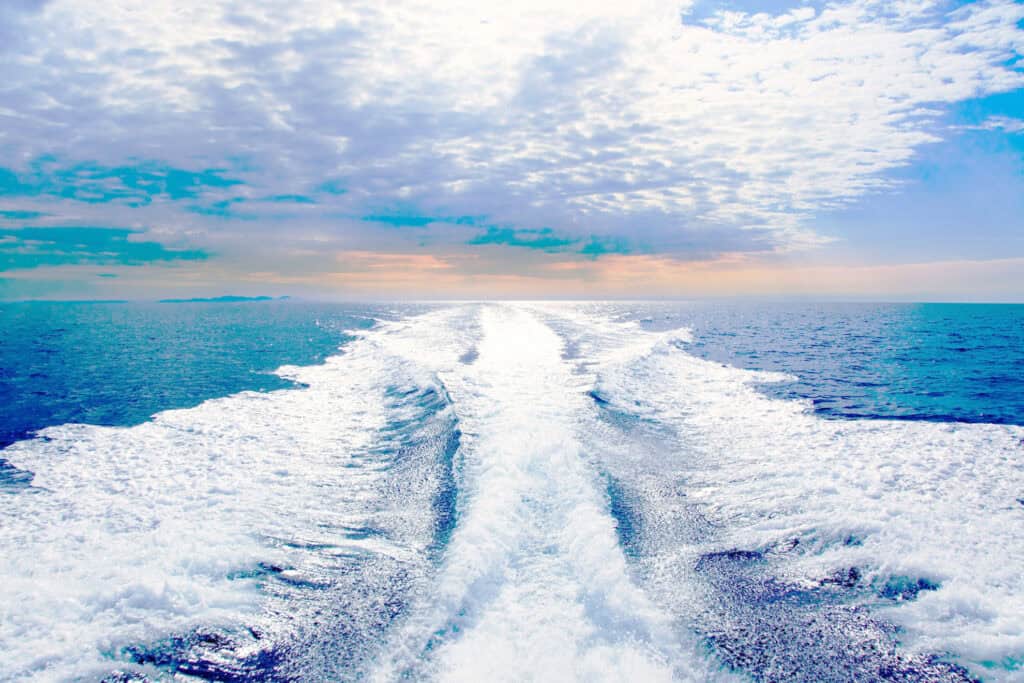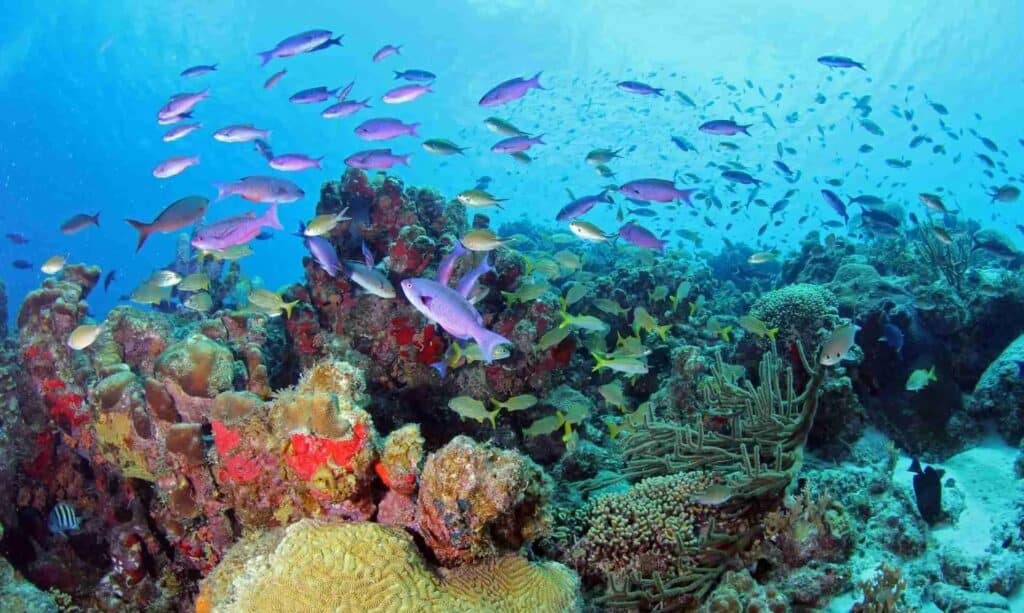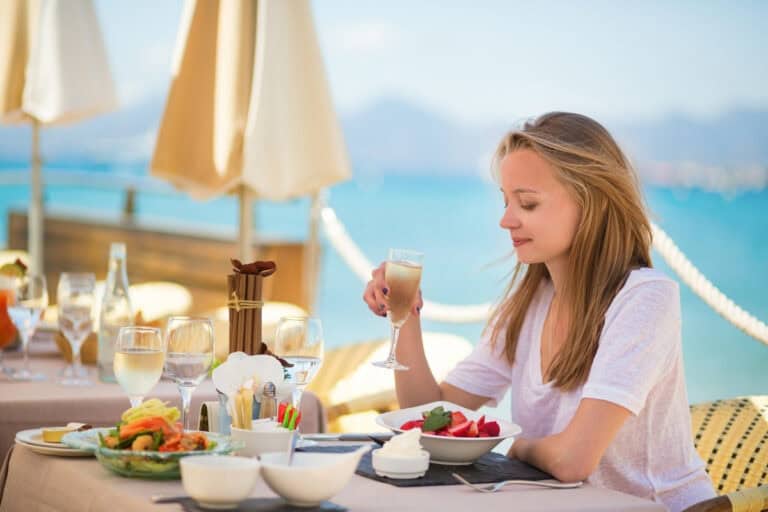
What is Curaçao Blue Liqueur made from?
What is Curaçao Blue Liqueur made from?
Ever wondered what gives that electric blue cocktail its distinctive citrus flavor and vibrant color?
The story behind the island’s signature spirit
Blue Curaçao is a world-famous liqueur that gets its name and origin from the Curaçao island in the Caribbean Sea. The spirit is crafted from the dried peels of the laraha, a bitter oranges variety that grows exclusively on this Dutch colony. When Spanish settlers first brought Valencia oranges to Curaçao centuries ago, the arid climate transformed the fruit into something entirely different—small, incredibly bitter oranges that became the foundation of this legendary liqueur.
The production process begins by drying the unripe peel under the sun, which concentrates the aromatic oil within. These dried peels are then steeped in alcohol to extract their intense citrus essence and etheric oils. Historic distilleries like Lucas Bols, Pierre Ferrand, and Holland Senior & Co have perfected this craft over generations, some using heated 120-year-old copper stills that add character to the final product. While the natural laraha creates a clear or orange-tinted liqueur, the signature electric blue color comes from added food coloring—a purely aesthetic touch that gives the spirit its exotic appearance to cocktails and made it famous in tropical mixed drinks worldwide.

Luxury car rentals in Curaçao
Experience transparent pricing and exceptional service with Rent Car Curaçao. Choose from luxury vehicles elevate your Curaçao adventure.
How the blue liqueur became a global cocktail phenomenon
The transformation of laraha-based liqueur from a small Caribbean island specialty into an international bartending staple happened through a combination of unique flavor, exotic appearance, and strategic marketing.
The authentic production process on the island
Traditional distilleries on Curaçao island continue time-honored methods passed down through generations. The unripe peel of laraha oranges undergoes careful day cooling and sun-drying before maceration. Some facilities, particularly those established during the East India trading era, maintain an alchemical mystery around their exact recipes. These producers achieve remarkable orange-like flavour with varying degrees of bitterness depending on harvest timing and distillation techniques. The precision required demonstrates an impressive degree of accuracy that separates genuine island-made liqueurs from imitations.
Modern production and global brands
While authentic Curaçao liqueur originates from the island, several international producers now create their own versions. Lucas Bols in Amsterdam became one of the first European companies to commercialize the spirit in the 1800s, followed by French producers like Pierre Ferrand. Today, current day curaçao production includes both traditional island distilleries such as Holland Senior & Co and modern facilities worldwide. Each maintains distinct flavor profiles, though all rely on citrus fruit essences as their foundation. Quality varies significantly, with premium versions using authentic laraha extracts while budget options substitute generic orange oils.
The signature color and cocktail culture
The brilliant blue hue became the liqueur’s defining characteristic, adding dramatic visual appearance to cocktails throughout the twentieth century. Bartenders embraced the spirit for creating Instagram-worthy mixed drinks long before social media existed. Famous cocktail recipes like the Blue Hawaiian, Blue Lagoon, and Swimming Pool depend entirely on this vibrant colorant. Even celebrities contributed to its popularity, with Elvis Presley famously enjoying Blue Hawaiian cocktails during his Hawaiian film era, cementing the drink’s tropical association in popular culture.
Visiting production facilities and tasting experiences
Tourists exploring the island can visit working distilleries to witness production firsthand. These tours explain how laraha in alcohol extracts the precious aromatic oil and etheric oils from the dried peels. Visitors observe copper stills and aging barrels while learning about quality control standards. Tasting sessions allow comparison of different styles, from clear versions to orange-tinted varieties, helping you understand subtle flavor distinctions. Most facilities offer complimentary samples and sell bottles unavailable in international markets, making these visits essential for liqueur enthusiasts.
Technical requirements for viewing distillery information online
When researching distilleries and booking tours through your browser window, ensure your settings allow proper functionality. Some booking platforms may struggle if you use automation tools or aggressive ad blockers, potentially preventing reservation confirmations. If you encounter access issues, check for a Reference ID error message and adjust your browser’s privacy settings. Most official distillery websites work best in standard light mode with JavaScript enabled, ensuring smooth navigation through tour schedules, pricing information, and historical content about this fascinating Caribbean spirit.
What is Curaçao Blue Liqueur made from? - FAQ
What makes Blue Curaçao different from other orange liqueurs?
The key distinction lies in its source: authentic Blue Curaçao uses the laraha fruit, a bitter orange variety exclusive to the Caribbean island. While other orange liqueurs like Triple Sec or Cointreau use various citrus fruits, only laraha-based versions can claim true Curaçao designation. The brilliant blue coloring is purely aesthetic, added to create visual appeal in tropical drinks. Natural laraha liqueur is actually clear or amber-tinted, with the intense citrus essence extracted through traditional maceration methods that preserve the fruit’s complex aromatic profile and distinctive bitterness.
Can I visit the distilleries where Blue Curaçao is produced?
Yes, several historic distilleries on Curaçao island welcome visitors for tours and tastings. Landhuis Chobolobo, home of the original Curaçao liqueur, offers guided experiences showing traditional production methods. You’ll witness how dried laraha peels are processed and learn about the spirit’s history dating back to the island’s days as a Dutch colony. Tours typically include complimentary tastings of various liqueur styles, access to gift shops with exclusive bottles, and educational displays about the unique laraha fruit. Most distilleries are located near Willemstad and easily accessible by rental car.
What does Blue Curaçao taste like?
The flavor profile features intense citrus notes with pronounced bitterness from the laraha orange peels, balanced by sweetness from added sugar. Unlike regular oranges, the laraha creates a more complex, slightly medicinal orange-like flavour with herbal undertones. Quality varies significantly between producers—premium brands using authentic island-grown fruit deliver more sophisticated taste with multiple degrees of bitterness depending on production methods. The liqueur’s sweetness level ranges from dry to syrupy, with alcohol content typically between 15-40% depending on the brand. When tasted neat, expect bold citrus punch followed by warming alcohol and lingering bitter-orange finish.
What are the most famous cocktails made with Blue Curaçao?
The liqueur stars in numerous tropical cocktail recipes that showcase its vibrant color and citrus character. Classic mixed drinks include the Blue Hawaiian (rum, pineapple, coconut cream), Blue Lagoon (vodka, lemonade), Blue Margarita (tequila, lime juice), and Swimming Pool (vodka, rum, pineapple, coconut). These drinks became popular in beach bars throughout the Caribbean Sea region during the mid-20th century. The liqueur’s dramatic exotic appearance makes it perfect for layered shots and Instagram-worthy presentations. Many bartenders use it specifically for visual impact, as its bold color instantly transforms ordinary drinks into eye-catching tropical creations.
Is Blue Curaçao only available in blue, or are there other colors?
While blue is most famous, authentic Curaçao liqueur comes in multiple colors including clear, orange, green, and red—all using the same laraha base with different food colorings added. The clear or “blanc” version shows the liqueur’s natural appearance after distillation, while orange-tinted varieties use natural caramel coloring. These color variations don’t affect taste; they’re purely aesthetic choices for different cocktail recipes. Premium producers like Pierre Ferrand offer “dry” versions with less sugar and more pronounced bitter orange character. Traditional island distilleries focus on the clear and orange versions, considering them more authentic to historical recipes.
How should I store Blue Curaçao after opening?
Store opened bottles in a cool, dark location away from direct sunlight and heat sources. The high alcohol content acts as a natural preservative, allowing the liqueur to maintain quality for 1-2 years after opening when properly sealed. No refrigeration is necessary, though chilling can enhance the drinking experience for neat tastings or tropical mixed drinks. Keep the bottle tightly capped between uses to prevent aromatic oil evaporation and oxidation. Avoid storing near heat sources or in your browser window—wait, that’s digital! Keep away from stoves and sunny windowsills. Quality degrades faster once exposed to air and light.
What food pairings work well with Blue Curaçao?
The liqueur’s citrus intensity and bitterness complement rich desserts, chocolate-based dishes, and tropical fruit plates. Try drizzling clear Curaçao liqueur over vanilla ice cream, incorporating it into chocolate truffles, or using it in citrus-glazed cakes. The bitter orange notes cut through creamy dishes beautifully, making it excellent for crème brûlée or panna cotta. On Curaçao island, locals use it in traditional desserts and as a digestif after meals. The liqueur also enhances savory dishes—try it in orange-glazed duck or pork, where the aromatic oils add complexity. Pair cocktails containing it with grilled seafood or spicy Caribbean cuisine.
Can I use Blue Curaçao in cooking and baking?
Absolutely! The liqueur adds distinctive citrus flavor to both sweet and savory recipes. Use it in cake batters, frosting, fruit compotes, marinades, and glazes where you’d normally use orange extract or zest. The alcohol evaporates during cooking, leaving concentrated orange-like flavour behind. Popular applications include orange-soaked sponge cakes, crêpes Suzette, fruit salads, and seafood marinades. When baking, substitute it for other liquids in recipes, adjusting sugar content since Curaçao liqueur contains sweetness. The blue color typically fades or changes during heating, so clear or orange versions work better for dishes where color matters. Use premium brands for better flavor results.
What's the alcohol content of Blue Curaçao?
Alcohol content varies significantly between producers and styles, typically ranging from 15% to 40% ABV (alcohol by volume). Standard commercial brands like Lucas Bols Blue Curaçao contain around 21-24% ABV, similar to other liqueurs. Premium laraha-based liqueur from island distilleries may reach 30-35% ABV with less sugar content. “Dry” or “sec” versions marketed to professional bartenders often contain higher alcohol and less sweetness. Lower-proof versions (15-20%) are sweeter and more approachable for sipping, while higher-proof options (35-40%) deliver more intense citrus fruit character and work better in spirit-forward cocktails. Always check labels as strength varies by brand.
Where else besides Curaçao can I buy authentic laraha liqueur?
Authentic laraha-based liqueur produced on the island is available internationally through specialty liquor stores and online retailers. Lucas Bols distributes widely throughout Europe and North America, while Pierre Ferrand products reach premium markets globally. However, bottles purchased directly from island distilleries like Holland Senior & Co often feature exclusive blends unavailable abroad. When shopping internationally, verify the product contains genuine laraha citrus rather than generic orange flavoring. Duty-free shops at airports throughout the Caribbean Sea region stock various brands. For the most authentic experience and best selection, purchase directly during distillery visits on the island itself.
Discover the Wonders
of Klein Curaçao
Experience the untouched beauty of Klein Curaçao, a hidden paradise with stunning beaches and rich marine life. Perfect for snorkeling, diving, or simply relaxing in the sun.
Popular subjects
Luxury car rentals in Curaçao
Experience transparent pricing and exceptional service with Rent Car Curaçao. Choose from luxury vehicles elevate your Curaçao adventure.
Subscribe to our newletter
Discover the Wonders of Klein Curaçao
Experience the untouched beauty of Klein Curaçao, a hidden paradise with stunning beaches and rich marine life. Perfect for snorkeling, diving, or simply relaxing in the sun.





